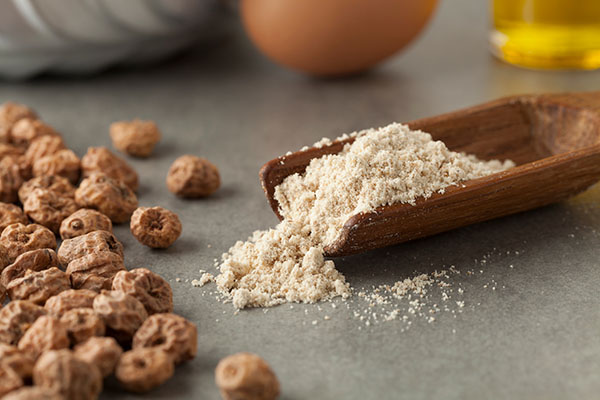
Advertisement
Organic corn is a healthy superfood that should be part of a balanced diet. Several studies have found that consuming nutrient-rich corn regularly can also help boost your digestive health.
If you’re still on the fence about eating more corn, here are four health benefits of eating more of this delicious whole grain.
Corn is a “health-protective” whole grain
While it is considered a vegetable by many, corn is technically a whole grain. Corn is naturally gluten-free, making it the perfect alternative to wheat if you have a gluten allergy or sensitivity.
Corn is a health-protective food. Research suggests that whole grain consumption is linked to lower risks of obesity, heart disease, stroke, Type 2 diabetes and cancer.
You read that right: Even though corn is a grain that contains carbs, eating corn can help lower your risk of being obese. However, this doesn’t mean you can eat as much corn as you want!
Eat corn moderately. Your serving size should just be enough to meet your body’s dietary needs and activity level. Most adult women can eat one ear of corn, a half cup of oven-roasted kernels, or three cups of popcorn in one sitting.
Corn is a nutrient-rich superfood
Corn is a natural source of B vitamins and potassium.
Potassium is an essential mineral that supports healthy blood pressure, heart function and muscle contractions. Additionally, potassium can help prevent muscle cramps and maintain muscle mass.
Corn offers at least 10 times more vitamin A than other grains! This vitamin helps prevent cognitive decline and boosts your immune health.
Vitamin A can is essential for your eye health. It helps convert the light that hits your eye into an electrical signal that can be sent to your brain.
Being vitamin A deficient can cause a symptom called nyctalopia, or night blindness.
Vitamin A also helps form the mucous membranes in your respiratory tract and stronger membranes form better protective barriers that keep germs out of your bloodstream.
Corn provides protective antioxidants
Corn contains two main carotenoids (or pigments): lutein and zeaxanthin. These carotenoids help protect your eyes. Lutein and zeaxanthin can also help lower your risk of developing cataracts and macular degeneration.
Corn also contains an antioxidant called quercetin that can help reduce acute and chronic inflammation. Quercetin may also help prevent neurodegenerative diseases like Alzheimer’s.
According to studies, quercetin is linked to apoptosis, the self-destruct sequence your body uses to kill off worn-out or dysfunctional cells.
Research has also found that blue and purple corns contain other beneficial antioxidants that can help fight inflammation. These antioxidants also help protect you from oxidative stress, or an imbalance in your body’s production of cell-damaging free radicals and antioxidants like glutathione.
Corn can help improve your digestive health
Corn contains insoluble fiber, a type of fiber that isn’t broken down and absorbed into the bloodstream. This type of fiber stays in your gastrointestinal tract, increases stool bulk and helps push waste through your system. This can help prevent constipation and reduce the risk of hemorrhoids.
A diet rich in insoluble fiber also helps reduce colon cancer risk. Dietary fiber from corn can help promote weight loss by making you feel full for longer. This, in turn, helps reduce your cravings for junk food.
Always choose organic corn
Whole corn is a superfood that contains only one gram of fat and three grams of sugar per ear. But you should be careful when buying corn. There are at least 140 different types of genetically modified corn.
But most fresh corn on the cob isn’t genetically modified. When buying bagged frozen corn, avoid GMOs by looking for products that are “USDA Certified Organic.”
Avoid high fructose corn syrup (HFCS) or corn oil because they can cause an abnormal increase in body fat, particularly belly fat, and triglycerides or blood fats.
Incorporating corn into a healthy diet
If you don’t have fresh corn, cook with frozen organic corn.
- Add corn to salads, salsa, soups, stir-fries or veggie chili.
- You can also toss thawed frozen corn with avocado oil, sea salt and chipotle seasoning before oven roasting for a savory side dish.
- If you prefer something sweet, add corn to ice cream or pudding made with coconut milk and sweet corn cakes.
Sweet and savory corn recipes
Try these recipes to make delicious corn-based dishes at home!
Hearty Mexican street corn bowls
This recipe for hearty corn bowls combines fresh ingredients like avocado, cabbage, grilled corn, mixed greens, onion and tomato with eggs, queso fresco and rice to make a tasty and filling vegetarian meal.
If the basil-lime vinaigrette isn’t to your liking, replace the basil with other herbs like cilantro.
Ingredients for the basil-lime vinaigrette:
- 1/2 cup of olive oil or grapeseed oil
- 1/4 cup of packed fresh basil leaves or cilantro
- 1/4 cup of lime juice
- 2 tablespoons of rice vinegar
- 1-1/2 tablespoons of agave, pure maple syrup or honey
- 1 jalapeno pepper, seeded and chopped
- 1 clove of garlic, minced
- 1/2 teaspoon of salt to taste
Ingredients for 4 servings:
- 1-1/2 cups of uncooked brown rice
- 5 ounces of mixed greens of choice (e.g., kale, spinach and Swiss chard)
- 1-1/2 cups of cabbage, thinly sliced
- 1 cup of cherry tomatoes, halved
- 1/3 cup of queso fresco, crumbled
- 1/3 cup of red onion, finely chopped
- 1/4 cup of pistachios, chopped
- 2 husks of corn, grilled
- 4 hard-boiled eggs, peeled and sliced
- 1 avocado, sliced
Preparation:
- To make the basil-lime vinaigrette, combine all of the ingredients for the dressing in a small blender or food processor. Blend until you have the desired consistency. Store the basil-lime vinaigrette in a jar and refrigerate until ready to serve.
- Cook the rice according to package instructions.
- While the rice is cooking, prepare the corn. Soak the husks in water for 10 minutes.
- Preheat the grill to medium-high. Place the corn husks on the grill and cover. Cook for 15 minutes, flipping half-way through, or until the husks are blackened and the corn on the inside is steamed.
- Remove the corn husks from the grill and set them aside to cool. Once cool, carefully remove and discard the husks. Use a knife to carefully remove the kernels.
- Divide the cooked rice and the remaining ingredients between four bowls. Drizzle the desired amount of basil-lime vinaigrette over the bowls before serving.
Sweet corn creme brulee
This tasty dessert adds sweet corn to creme brulee.
Ingredients for 5-6 servings:
- 1/4 cup of brown sugar, plus 1 tablespoon, divided
- 1 pint of heavy cream
- 1 corn on the cob, with kernels cut off and the cob chopped up
- A pinch of salt
- 3 large egg yolks
- 1/4 vanilla bean scraped (if you don’t have a vanilla bean, add a teaspoon of vanilla extract.)
Preparation:
- In a small bowl, mix two tablespoons of sugar with the vanilla bean until it’s evenly dispersed throughout the sugar.
- Get a saucepan and combine the heavy cream, chopped-up cobs, corn kernels, salt and vanilla sugar. Bring the cream to a light boil and quickly turn off the heat. Cover the mixture and let it steep for 30 minutes.
- Run the cream through a sieve and press the kernels with the back of a wooden spoon to release any liquids.
- Preheat the oven to 300 F. In a separate bowl, whisk together the remaining three tablespoons of sugar and egg yolks. Temper the mixture by ladling about one-fourth cup of the warm cream mixture into the egg yolks. Keep whisking.
- Add the remaining warm cream mixture and whisk until it’s completely combined.
- Run the mixture through a fine-mesh sieve to catch eggy bits that have been cooked. Divide the custard between five to six ramekins.
- Place the ramekins in a large baking dish, then put the baking dish on the rack of the oven. Use a kettle to pour enough water into the baking pan until it reaches about halfway up the sides of the ramekins. Bake for 20 to 25 minutes or until the liquid is firm but still jiggly. Remove the warm ramekins and let them cool slightly on the kitchen counter, then transfer them to the fridge. Let the creme brulee chill for two to three hours.
- Sprinkle about 1 1/2 teaspoons of brown sugar over each custard. Use a torch that’s about one to two inches above the surface of the custard and consistently move the flame until the sugar bubbles and turns a light golden brown to form a smooth surface. Serve immediately.
Eat organic corn moderately and try these tasty recipes to boost your digestive health.
Sources:
Advertisements







